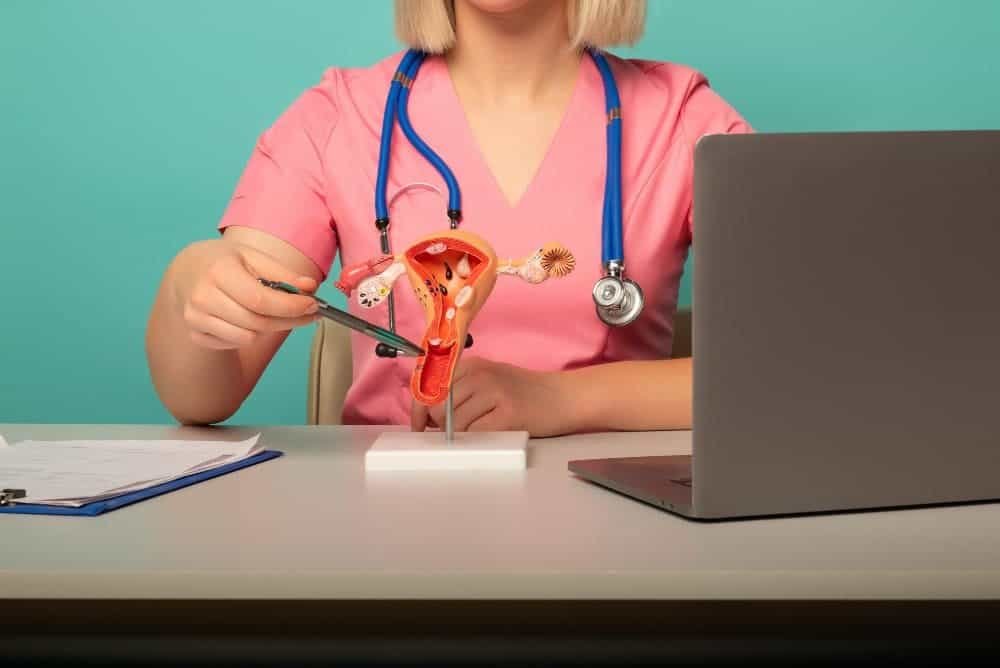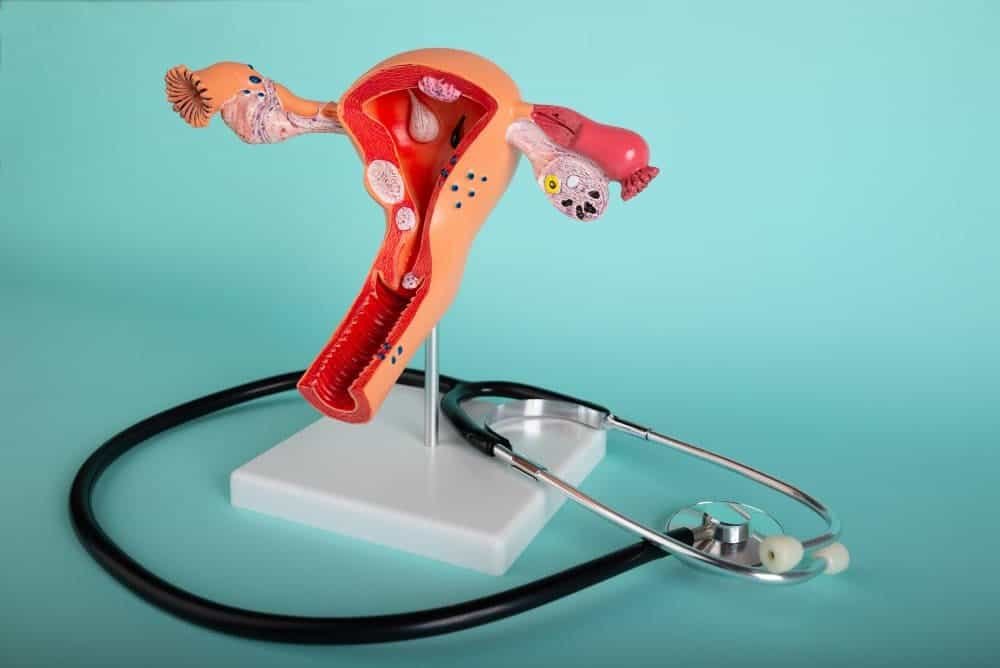Living with adenomyosis can be exhausting — heavy bleeding, painful cramps,and constant discomfort affect daily life. For many women, surgery like hysterectomy feels like the only option. But there are uterus-preserving treatment alternatives that truly help. discover how I managed adenomyosis without surgery.

How I Cured My Adenomyosis Without Surgery: A Look at the Options
Before we dive into treatments, it’s crucial to understand the condition itself. Adenomyosis occurs when the tissue that normally lines the uterus (the endometrium) begins to grow into the muscular wall of the uterus. This displaced tissue continues to act as it normally would — it thickens, breaks down, and bleeds during each menstrual cycle.
Because this blood has nowhere to go, it causes the uterine walls to thicken, leading to an enlarged uterus, severe pain, and heavy bleeding. The appearance of the enlarged lower abdomen is often called the “adenomyosis belly”. Many women who suffer from this condition feel frustrated and unheard, often being told their painful symptoms are just “bad periods.”
So, is adenomyosis dangerous? Medically, it’s considered a benign (non-cancerous) condition. However, its impact on quality of life can be severe, making effective treatment essential.
Common Symptoms of Adenomyosis
- Heavy menstrual bleeding
- Severe cramps, often requiring anti-inflammatory medicine like ibuprofen (Advil, Motrin, or IB key brands)
- Bloating and tenderness, sometimes described as “adenomyosis belly”
- Pain during intercourse
- Fatigue from chronic blood loss
These symptoms push many women to explore both medical treatments and natural approaches.
First Steps: Lifestyle and At-Home Relief

Before diving into medical procedures, many women — myself included — start with simple, accessible methods:
1. Heat Therapy 🔥
Using a heating pad, hot water bottle, or castor oil pack on the stomach provides comfort. Heat relaxes uterine muscles and reduces cramping.
2. Warm Baths
Soaking in a warm bath or trying sitz baths can ease pelvic tension and relieve discomfort.
3. Anti-Inflammatory Foods 🥗
Adjusting to an adenomyosis diet helps reduce flare-ups. This includes:
- Leafy greens, berries, and omega-3 rich foods
- Avoiding processed sugar and fried foods
- Adding turmeric and ginger, which act as natural anti-inflammatories
4. Medications
Doctors often recommend anti-inflammatory medicine or hormonal treatments like the intrauterine system (IUS). A Mirena coil thins the womb lining, lowering bleeding volume.
While these measures help manage pain, they rarely cure the condition fully. That’s why many women look for stronger, yet non-surgical solutions.
Non-Surgical Medical Treatments
When lifestyle adjustments aren’t enough, doctors offer treatments that avoid full hysterectomy:
Hormonal Treatments
- Contraceptive pills: Some specialists recommend the best contraceptive pill for adenomyosis based on hormone levels and patient needs.
- Intrauterine system (IUS): The Mirena coil releases hormones directly in the uterus, reducing symptoms.
Medications
- GnRH analogues, which suppress estrogen temporarily.
- Progesterone-based medicines that regulate bleeding.
But side effects often limit long-term use. That’s where image-guided procedures step in.
Uterine Artery Embolization (UAE): The Game-Changer 💉
One of the most effective uterus-preserving treatment alternatives is uterine artery embolization (UAE), also called uterine artery embolisation in the UK.
This non-surgical image-guided procedure works by cutting off blood supply to the diseased uterine tissue. Using uterine catheterization, tiny particles are injected to block the uterine arteries, shrinking the affected area.
How It Works
- A catheter is inserted through a small puncture, usually in the groin.
- Under X-ray guidance, the doctor navigates to the uterine arteries.
- Tiny particles are released, blocking blood flow.
- Over time, the adenomyotic tissue shrinks, and symptoms improve.
This procedure has been used for decades in treating fibroids, and experts have demonstrated its effectiveness in treating adenomyosis as well.
Why Choose Embolization Instead of Hysterectomy?
For many women, the idea of removing the uterus feels too extreme, especially if they still plan to have children. UAE offers a promising solution for managing adenomyosis while preserving fertility.
Key Benefits of UAE:
- Minimally invasive with no large incisions
- Effective symptom relief — most patients see improvement in bleeding and pain
- Faster recovery compared to surgical hysterectomies
- Preserves the uterus and body integrity
- Alternative to hysterectomy, especially when surgery is not desired or medically risky
The Role of Experts
Specialists like Dr. Samir Abdel Ghaffar, an interventional radiology consultant, focus on advanced procedures like uterine artery embolization. His practice in the Middle East demonstrates how UAE is changing the treatment plan for adenomyosis patients who want to avoid surgery.
Other Complementary Approaches
In addition to UAE, many women find relief by combining treatments:
- Sitz baths during flare-ups
- Regular use of anti-inflammatory foods and supplements
- Short-term use of pain-relief medicine like Advil or Motrin
- Mind-body therapies like yoga or acupuncture
These methods help in managing symptoms while medical treatment addresses the root condition.
Is There a Cure for Adenomyosis?
Currently, the only guaranteed cure is hysterectomy, since it removes the uterus entirely. But many women successfully control and reduce symptoms with a combination of:
- Uterine artery embolization
- Hormonal IUS like Mirena coil
- Medications and lifestyle adjustments
So while “cure” may not mean total elimination, adenomyosis can be managed effectively without surgery.
Adenomyosis and Fertility
One of the most pressing concerns for younger patients is fertility. While adenomyosis may affect conception, uterus-preserving treatments like UAE and IUS offer hope. Unlike hysterectomy, they keep the uterus intact, allowing women to still plan for children.
Patient Stories and Results 🌺
Women who undergo UAE often report:
- Reduced bleeding within months
- Significant pain relief
- Normalized menstrual cycles
- Decrease in uterus size, easing the adenomyosis belly look
Many studies have demonstrated symptom reduction that continues for years after treatment.
FAQs About Adenomyosis and Non-Surgical Treatments
1. Is adenomyosis dangerous?
Adenomyosis is not usually life-threatening, but it can seriously impact quality of life. It causes heavy bleeding, severe pain, and fatigue. In advanced cases like adenomyosis stage 4, symptoms can mimic other conditions, which is why medical evaluation is important.
2. What is the best treatment for adenomyosis?
The best treatment depends on your age, fertility goals, and severity of symptoms. Options include:
- Anti-inflammatory medicine like ibuprofen, Advil, or Motrin
- Hormonal therapies such as the Mirena coil (intrauterine system)
- Uterine artery embolization (UAE) – a proven, non-surgical image-guided procedure that shrinks adenomyotic tissue
- Hysterectomy – the only complete cure, but usually considered last
3. Does adenomyosis require a hysterectomy?
Not always. While hysterectomy removes the uterus and guarantees adenomyosis will not return, it’s not the only option. Many women find long-term relief through uterus-preserving treatment alternatives like UAE or hormonal IUS.
4. Can adenomyosis go away after uterine artery embolization?
Yes — studies have demonstrated that uterine artery embolisation reduces pain, bleeding, and uterine size in most patients. Over months post-procedure, symptoms continue to improve as the adenomyotic tissue shrinks.
5. What foods help with adenomyosis?
An adenomyosis diet focuses on anti-inflammatory foods like leafy greens, fatty fish, turmeric, ginger, and berries. Reducing processed foods and sugar also helps lower inflammation. These lifestyle changes support medical treatments.
6. Can adenomyosis look like a belly?
Yes. Many women describe adenomyosis belly — a swollen lower abdomen caused by an enlarged uterus. Searching adenomyosis belly images shows how visible the condition can be, but treatments like UAE help reduce this over time.
7. What is adenomyosis catheterization?
It refers to the process during uterine catheterization, where a thin tube is inserted into the arteries of the uterus. This is part of uterine artery embolization, which blocks abnormal blood flow and helps treat adenomyosis effectively.
Final Thoughts ✨
If you’re wondering what is the best treatment for adenomyosis, the answer depends on your stage, symptoms, and family plans. For some, hormonal therapy or anti-inflammatory foods may be enough. For others, a non-surgical image-guided procedure like uterine artery embolization offers the best balance between effectiveness and uterus preservation.
Adenomyosis is tough, but with modern medicine, you no longer need to feel trapped between unbearable symptoms and surgery.
 العربية
العربية 